[ad_1]
Tagore and the tram were born in Calcutta almost around the same time — the poet in 1861 and the latter in 1873 — and they both went on to become synonymous with the city. Today, more than a century-and-a-half later, while Tagore still runs in the veins of the city, the tram will no longer run on its roads.
Whether you want to pat the tram’s back that it is ending its journey after running non-stop for 151 years, or feel overcome by anger that an environment-friendly mode of transport is being needlessly put to an end, depends on the philosophy or ideology you follow. The fact is that you’ll see the iconic Kolkata tram only in photographs and reels. But it’s also a fact that nothing is final and official yet.
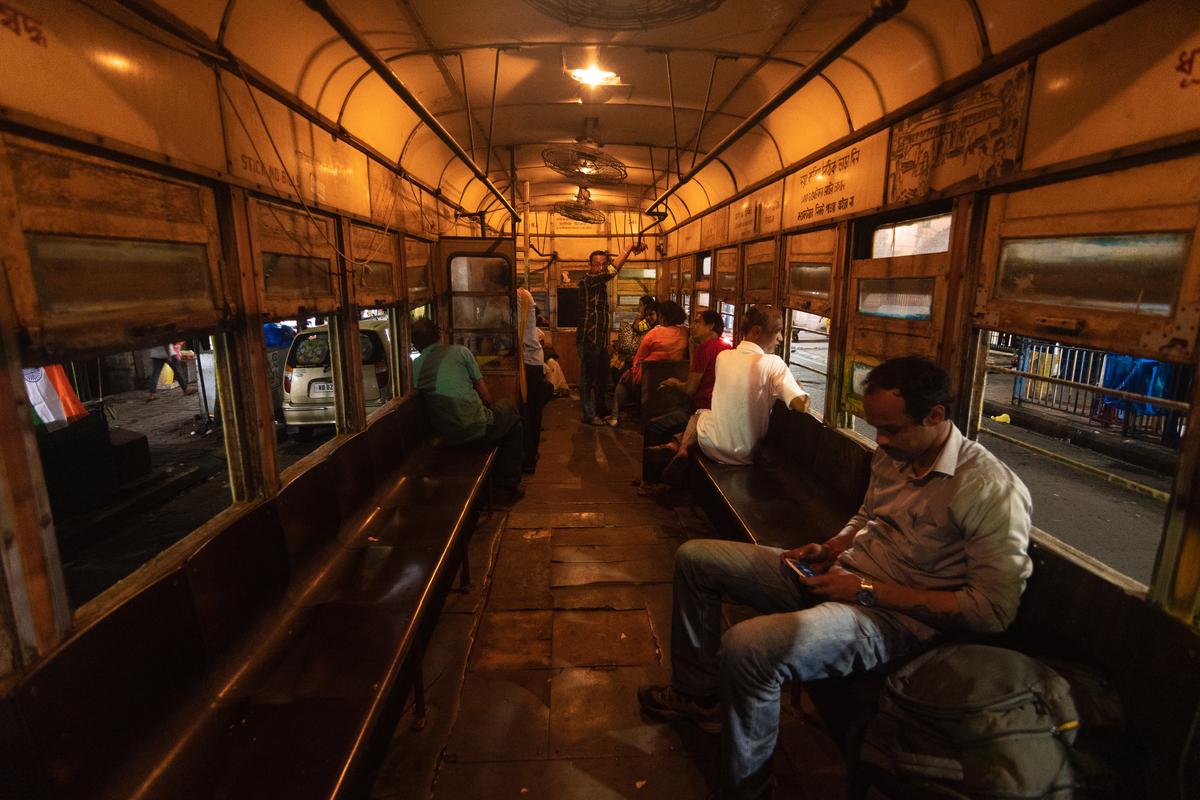
Inside one of Kolkata’s trams
| Photo Credit:
Getty Images
The matter is still in the Calcutta High Court, which formed an advisory committee in June 2023 to decide on how the tramway could be maintained. The West Bengal government, even though it has not officially spelt out its stand, has made it publicly known what it is going to tell the court: that it will do away with the tram and retain only one route — through the Maidan — for the purpose of tourism. And that is the cause for the sudden outpouring of anger and nostalgia on social media.

‘Living industrial heritage’
Not many outside Kolkata know that the tram is already almost dead. Just three routes are officially functional, of them only two are actually functional at the moment — the third remains suspended due to pipeline work. The total number of trams is only about 10.
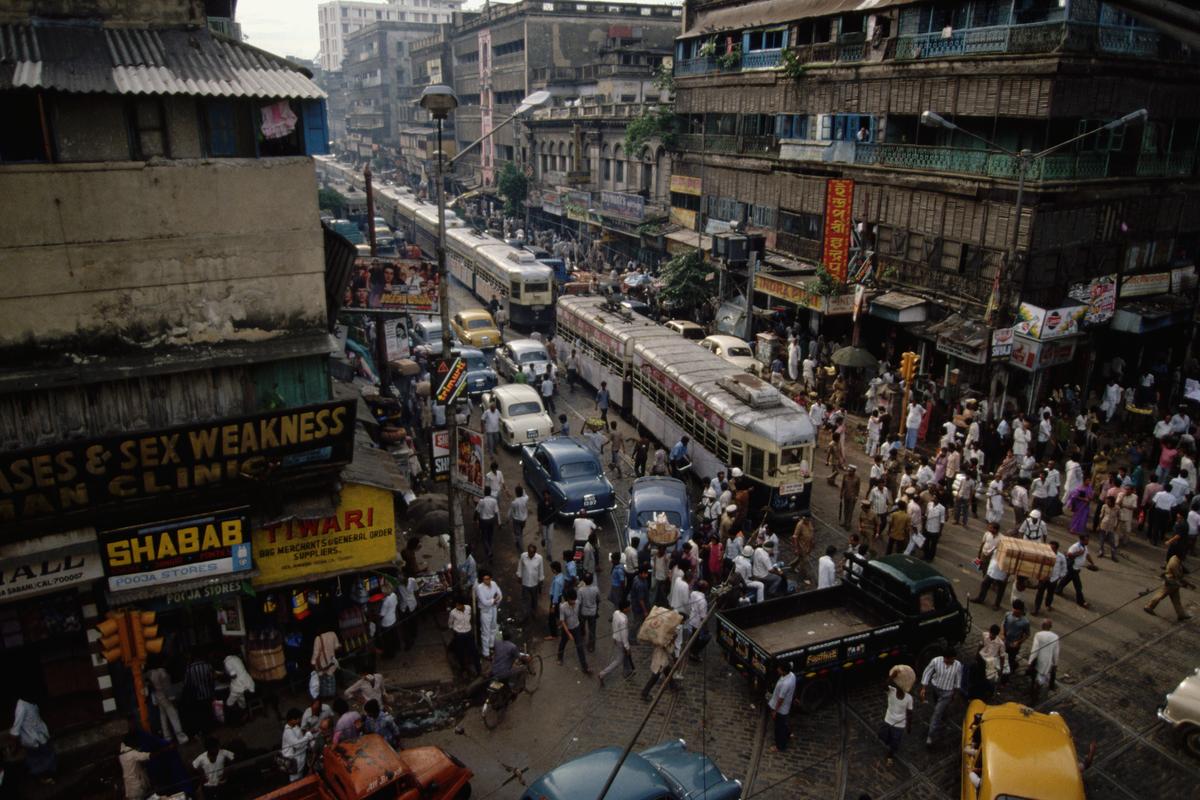
Pedestrians, trams, and automobiles clog a street in Park Circus
| Photo Credit:
Getty Images
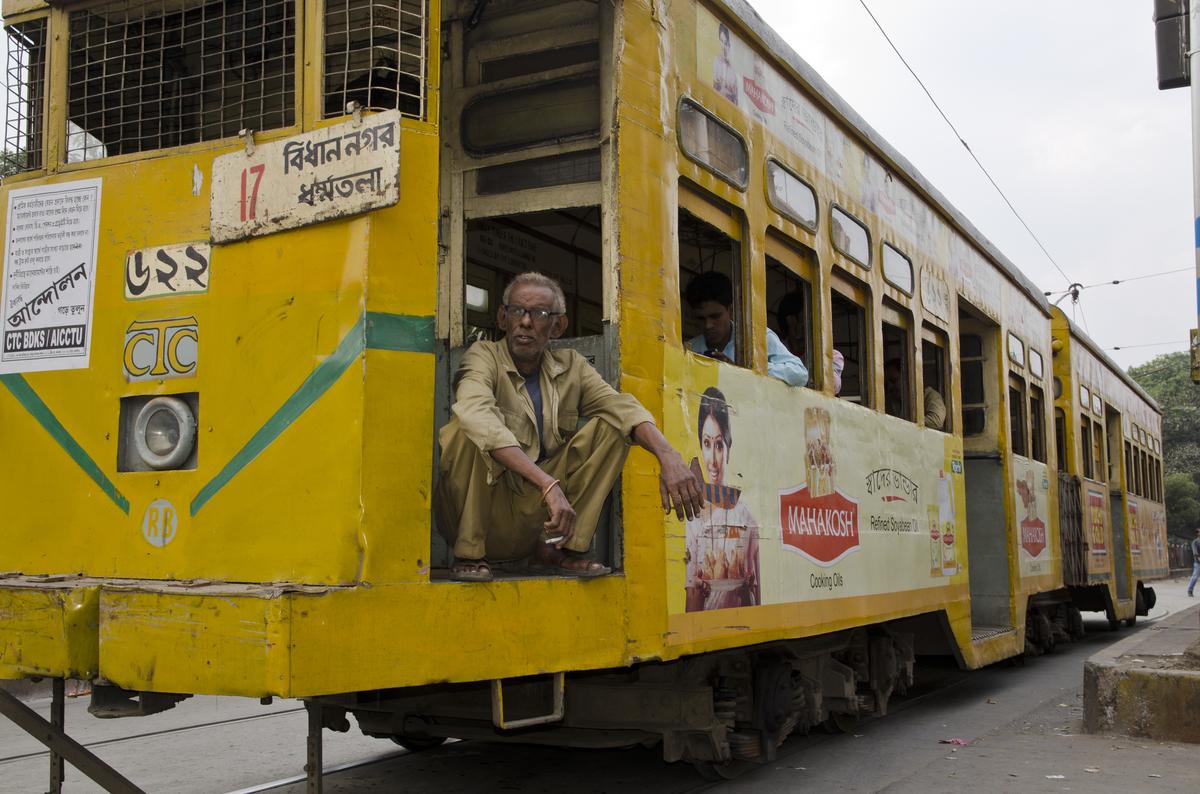
A driver rests in an old Kolkata tram
| Photo Credit:
Getty Images
Compare this to 1947, when there were 25 routes with some 200 tram cars. By the 1980s, the number of routes had gone up to 37, and the trams to 300. Over the years, there was a miniscule decline in the numbers, but a sharp and sudden downslide happened after the Trinamool Congress came to power in 2011. By 2015, barely 10 routes remained functional, served by about 100 trams. To those who see the inevitability of the tram’s closure, what’s most disturbing is that it is the most environment-friendly mode of transport in Kolkata, the only Indian city where it still runs.
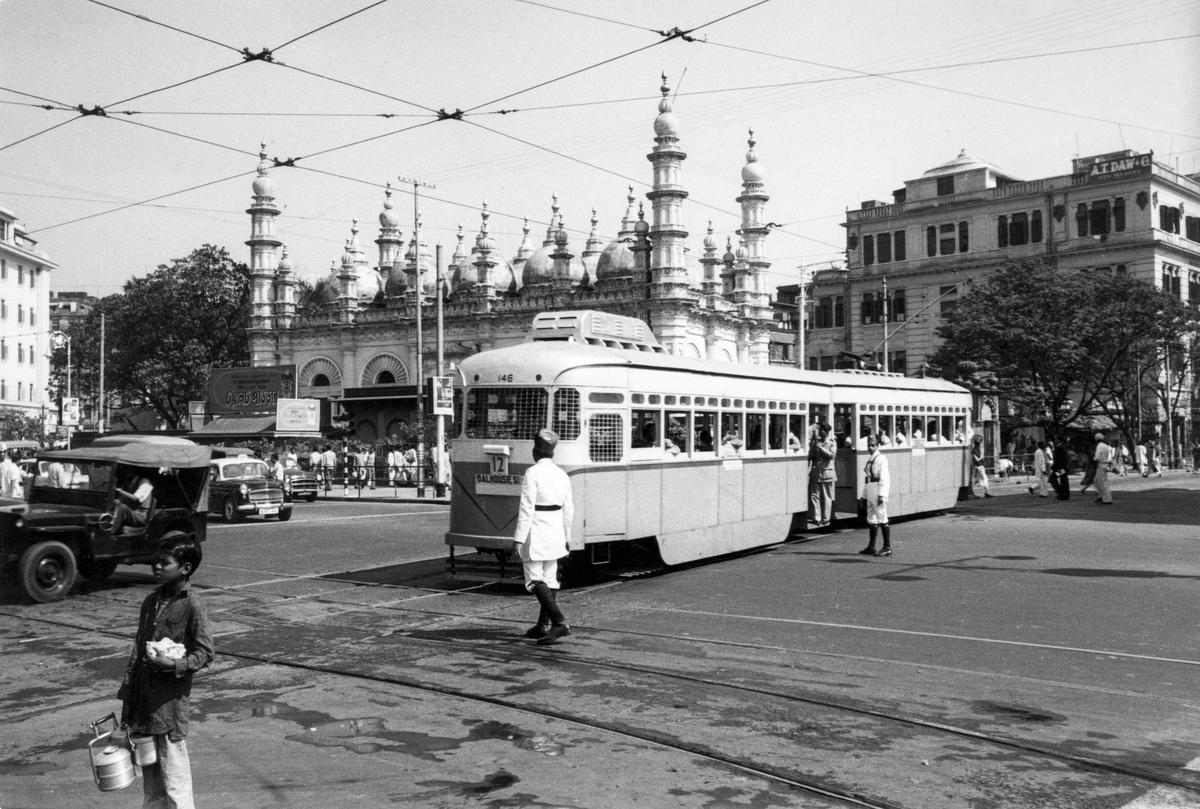
An archival photo from Chowringhee
| Photo Credit:
Getty Images
“EV [electric vehicle] is the new buzz word. Shiny new ones are being peddled. They tick the ‘eco-friendly’ box — a term that applies to a wide range of things from shampoos to saunas. At the same time, the original EV, which started trundling from Esplanade to Kidderpore 122 years ago [what began in 1873 was horse-driven] is being shut down,” mourns actor Dhritiman Chaterji. “This at a time when most cities in the world are ramping up their electric transport infrastructure. What an irony!”
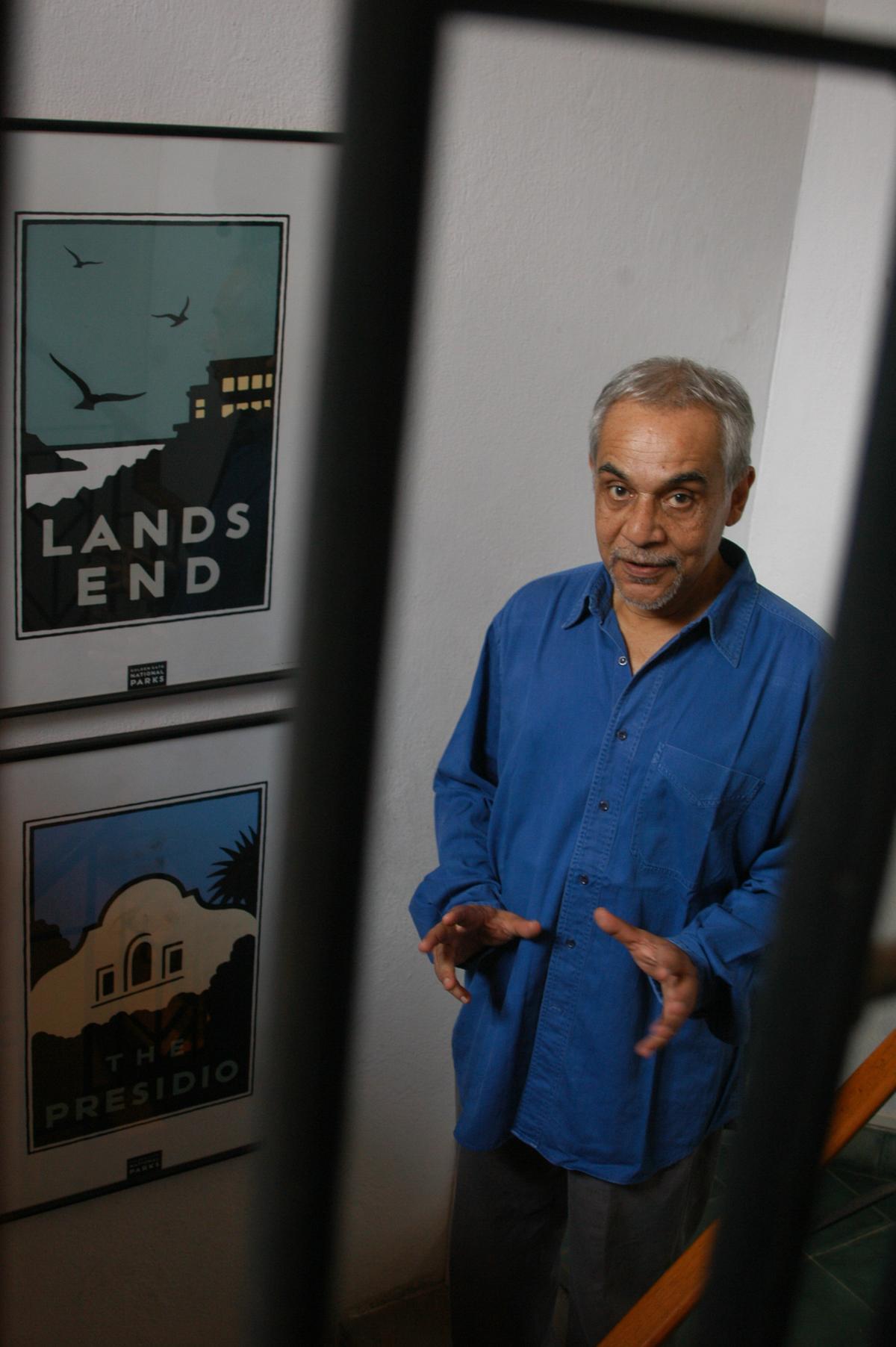
Dhritiman Chaterji
| Photo Credit:
Getty Images
Retired scientist Debasish Bhattacharyya, who is president of CTUA, or Calcutta Tram Users’ Association, and a member of the court-appointed panel, is, however, hopeful. “My sixth sense says the departure of the tram won’t be easy,” he says. “There are two major reasons for this: one, the attachment that citizens across generations feel for this living industrial heritage; two, a modern outlook on the tramway that has emerged in recent times and is becoming popular world over.”
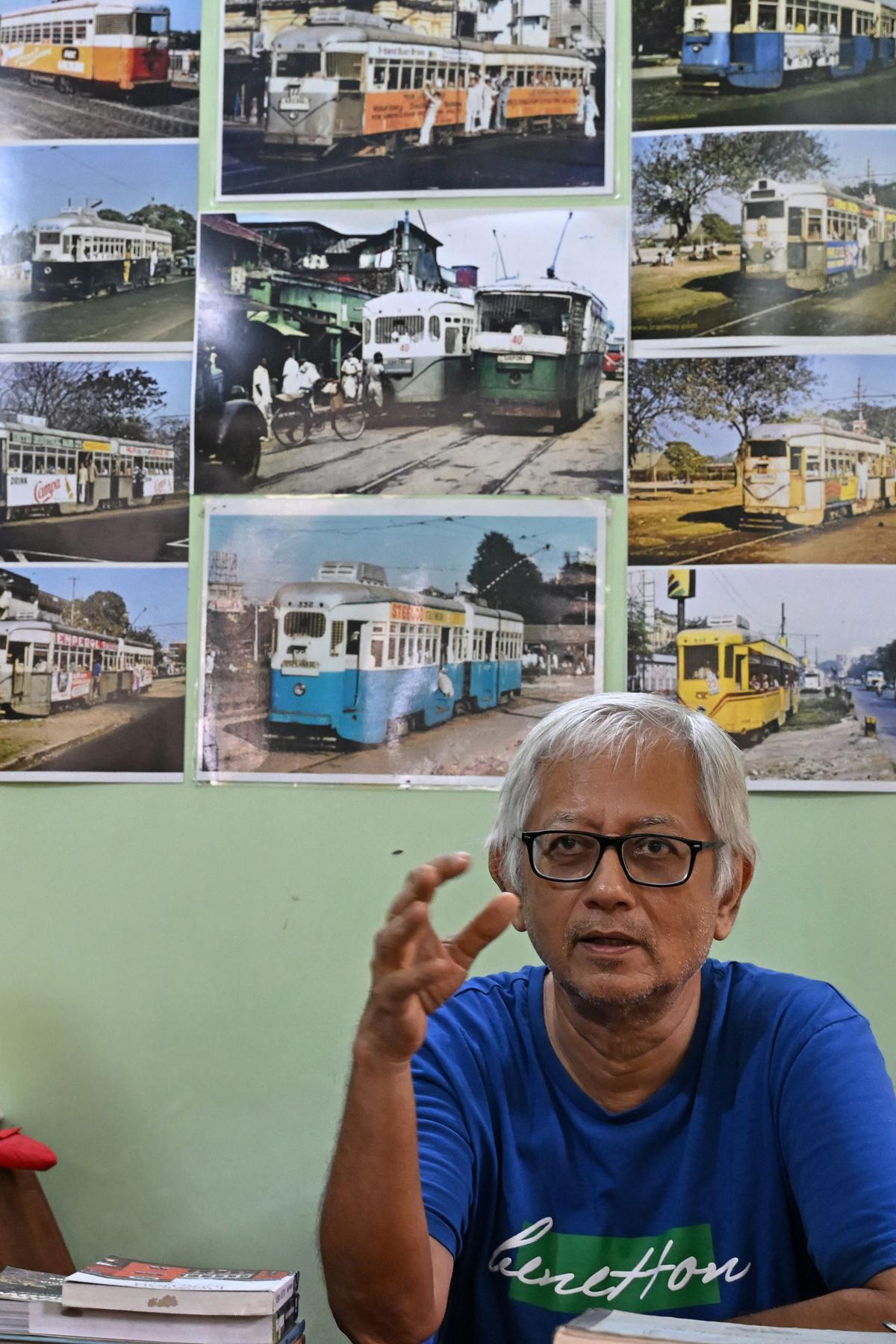
Debashish Bhattacharyya
| Photo Credit:
AFP
CTUA is perhaps the only organisation that has been relentlessly protesting against the neglect that the tram has been subjected to in the past decade. “People of Kolkata don’t consider the tram simply as a mode of public transport. For them, it is ancestral property. It is a signature of the city, like the Howrah Bridge. Wiping out the tram would mean the amputation of a vital organ of the city,” he adds.
Around the world
According to a survey by the International Association of Public Transport, as of 2021, 403 cities in 62 countries have trams and light rail transit systems. Besides Kolkata, Melbourne in Australia boasts one of the world’s oldest operational tramways (dating back to 1885), while Europe has the largest concentration of tram networks — having opened 624 km of lines since 2016.

Backbone of urban transport?
People like Mudar Patherya, a well-known heritage activist who often personally takes up projects to restore pieces of Kolkata’s history, are preferring a pragmatic stand: that the tram was hardly serving any actual purpose. Last weekend, Patherya organised a ‘tram party’ — some 80 people getting onto a tram and travelling, over music and sandwiches, from Gariahat to Esplanade and back — in order to “break the narrative which has only been complaining about the disappearance of the tram”.
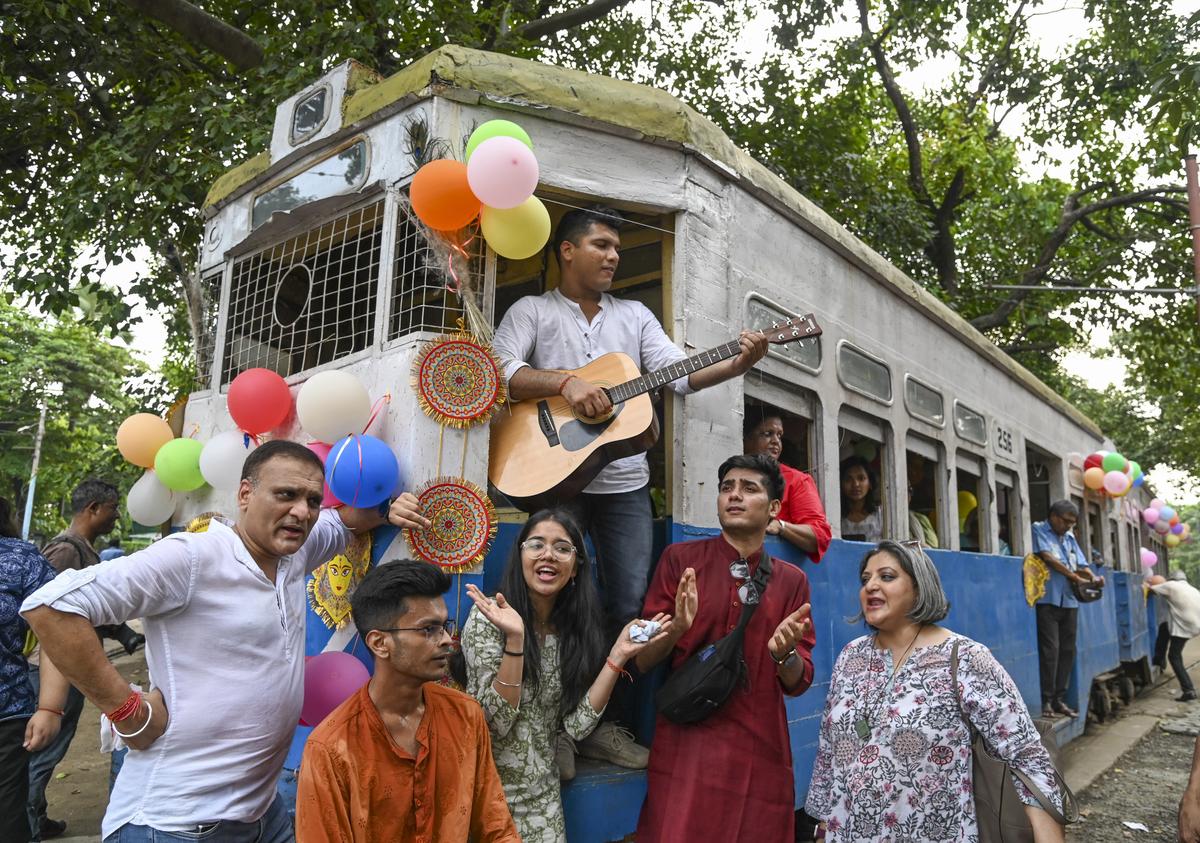
Tram lovers perform a song
| Photo Credit:
PTI
“The idea was to celebrate what trams have done for us for decades, instead of mourning its exit. The mood was not sombre, it was fun, and a trifle regretful maybe. I don’t have much hope for the tram because it was failing to serve any economic need. It is the metro that is taking over the mass rapid transport system — the tram is neither mass nor rapid,” he says.
But many feel that the tram still has a future. “It can be the backbone of our urban transport — modernising them as feeders for metro rail is a small investment with the potential for monumental impact,” says Arghyadip Hatua, an urban transport activist and a promoter of walkability. “At present, the city has 60 km of tram tracks. All we need is willingness on the part of the West Bengal government.”
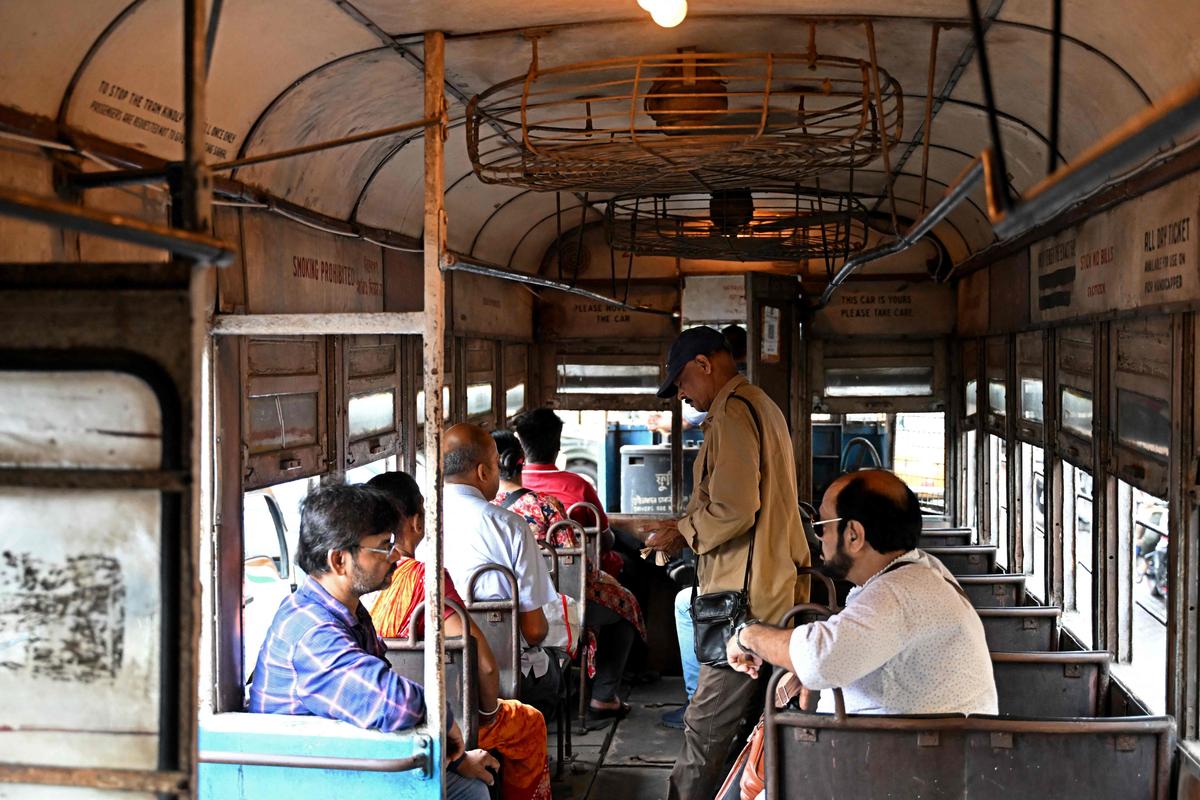
A conductor collects tickets as passengers commute in a tram in Kolkata
| Photo Credit:
AFP
Tagore did write a short poem on the tram — in a language-learning book for children — but nothing sad, or else Kolkata would have been replaying that poem today. But there are many songs of Tagore that are sprinkled with melancholy; they will come alive once the tram is dead.
bishwanath.ghosh@thehindu.co.in
Published – October 03, 2024 01:37 pm IST
[ad_2]
Source link





